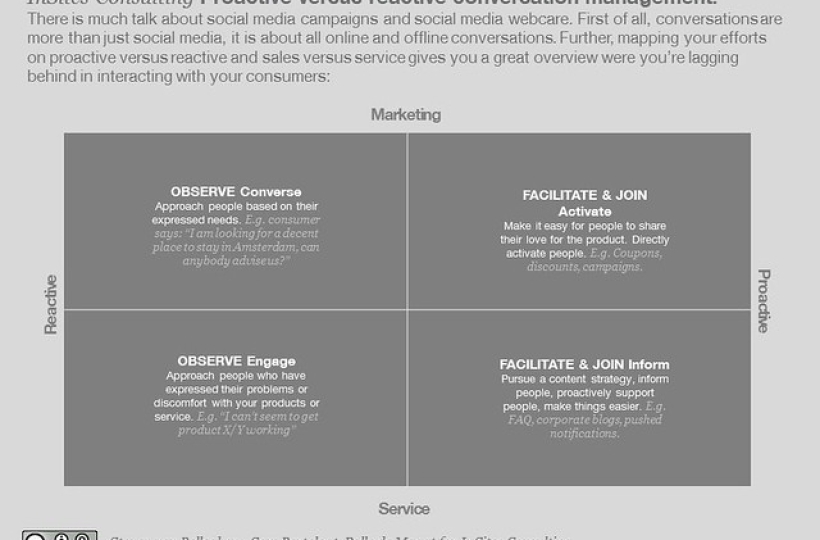Proactive versus reactive conversation management

How to engage in conversations? How are we managing consumer expectations as soon as we’re start answering questions on social media? Many companies just do social media campaigns and fail to have a follow up on their social media efforts. In other words: they do a great campaign to attract people to their Facebook fanpage, but fail to answer the questions and solve the problems of this new crowd.In a conversation era, there is no marketing without service.
On top of that, there’s the dilemma of managing expectations: many don’t wan’t to open ‘the floodgates’ on consumers reacting on their online efforts, just because they have the perception (or self-knowledge) that they won’t be able to handle that. They adopt a more reactive approach on what’s happening online, maybe to, someday, change into a more proactive conversations company.
That’s why we usually plot conversations efforts on proactive versus reactive axes and service versus marketing axes.
Note: we use Observe, Facilitate and Join as elements of the existingObserve-Facilitate-Join model.
That makes four kinds of conversation management:
- Reactive and marketing-driven: OBSERVE Converse Approach people based on their expressed needs. E.g. consumer says: “I am looking for a decent place to stay in Amsterdam, can anybody advise us?â€
- Reactive and service-driven: OBSERVE Engage Approach people who have expressed their problems or discomfort with your products or service. E.g. “I can’t seem to get product X/Y workingâ€
- Proactive and marketing-driven: FACILITATE & JOIN Activate Make it easy for people to share their love for the product. Directly activate people. E.g. Coupons, discounts, campaigns.
- Proactive and service-driven: FACILITATE & JOIN InformPursue a content strategy, inform people, proactively support people, make things easier. E.g. FAQ, corporate blogs, pushed notifications.
What do you think? Makes sense?
